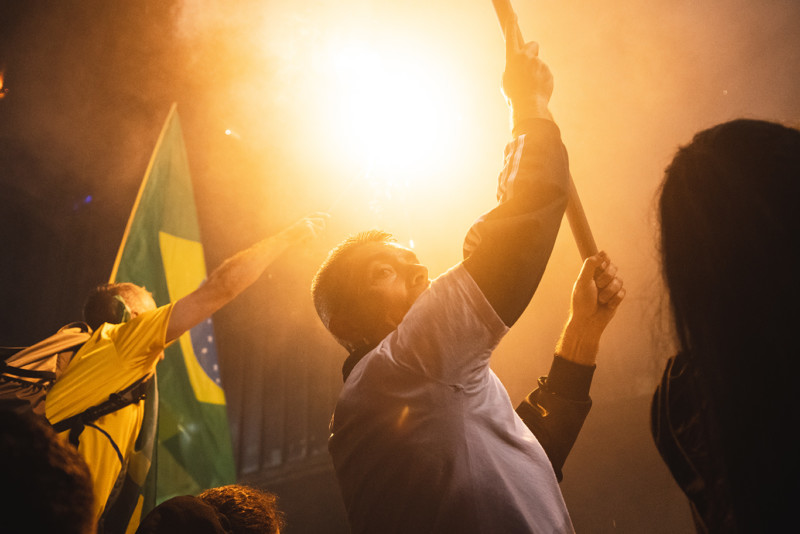
My name is Ettore Chiereguini, and I’m a freelance photographer from Brazil. Here are some things I’ve learned about photographing riots and protests.
Gear
Consider two kinds of lenses: a wide angle and a telephoto. Why? wide will show you the whole picture, the whole frame, the flags, the slogans. It will put you in the scene.
The telephoto? Easy: you don’t want to be in there when s**t happens. Trust me on this one. But keep in mind that even a 70-200mm won’t guarantee your safety. What about a zoom lens? If you have it, bring it — it will help you a lot. A 24-70mm and a 70-200mm can be your best friends.
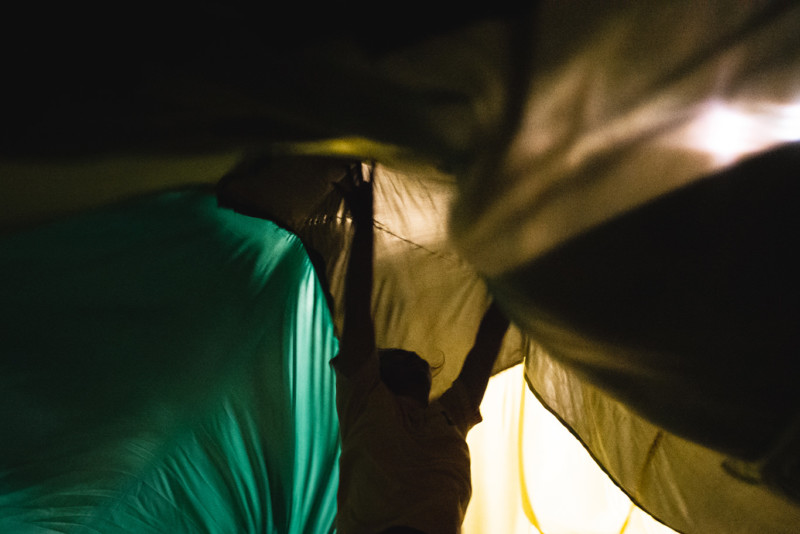
Rallies
These are almost calm. You can even spot a good number of children having fun. Police may surround the area as a safety measure. Stay calm, as almost nothing happens at these kinds of things. Focus on not being in people’s way and do your job.
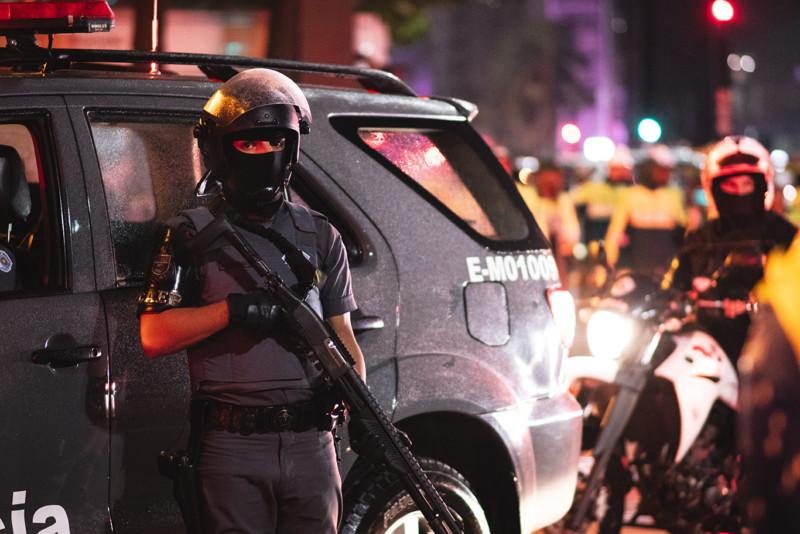
Protests
If you’re covering a protest, always be awake. Most of the protesters are nervous, and the police are nervous. A single isolated event can be the trigger for anything. Same tactics, don’t be in people’s way, take your photos, follow them by their side, in front, at their backs, whatever.
But here comes another tip: always be aware of your surroundings, be aware of backpacks, stay aware of the police formation (lines of motor and cars, lines of cops). People are stressed. Don’t participate, only snap. Be quiet and try to not influence anything — this is their fight, not yours!
Remember that you’re the photographer, not the person in the front line, and, as I mentioned, any isolated event can be a trigger…
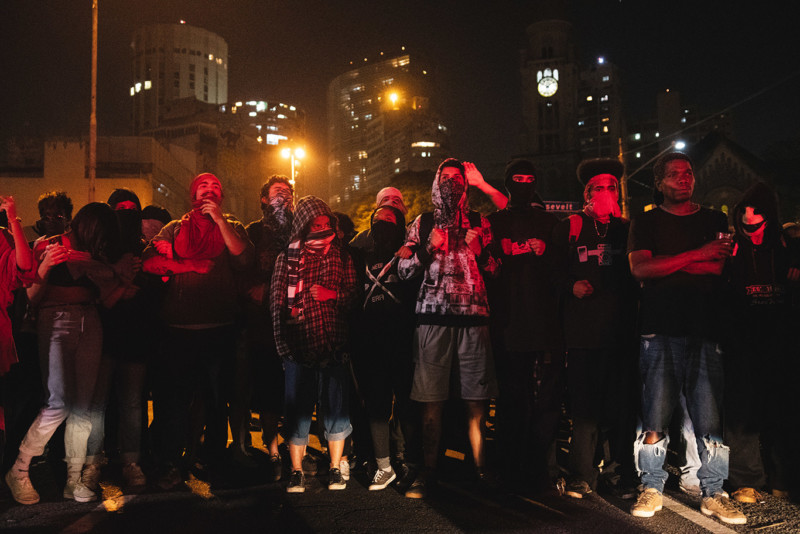
Riots
Are you at a riot? Are you happy? If yes, I have bad news for you: people may get hurt, and just hope it isn’t you. Control your adrenaline to not f**k up. As soon some rioter swings full force on the police, police are going to use everything they have to control people and take them out of the streets, so things like rubber bullets, bombs, stun grenades, and water are all normal things you’ll have to deal.
Rioters are a danger too: things like glass bottles and Molotovs may be thrown at the police. And remember that you’re not anyone’s friend — you’re not the police’s friend and you’re not the rioters’ friend. You are on your own, and you do you. Keep yourself safe, and try to avoid risk areas where the confrontation is happening.
Thinking about shooting riots, I have to say something even sadder: a helmet makes you an easy target. Be aware of what you’re using! Helmets saying you’re ‘PRESS’ can be a target for both police and rioters. They don’t respect you because of it — you’re their enemy now because they don’t know if they can trust you or not. What a shame and very sad.
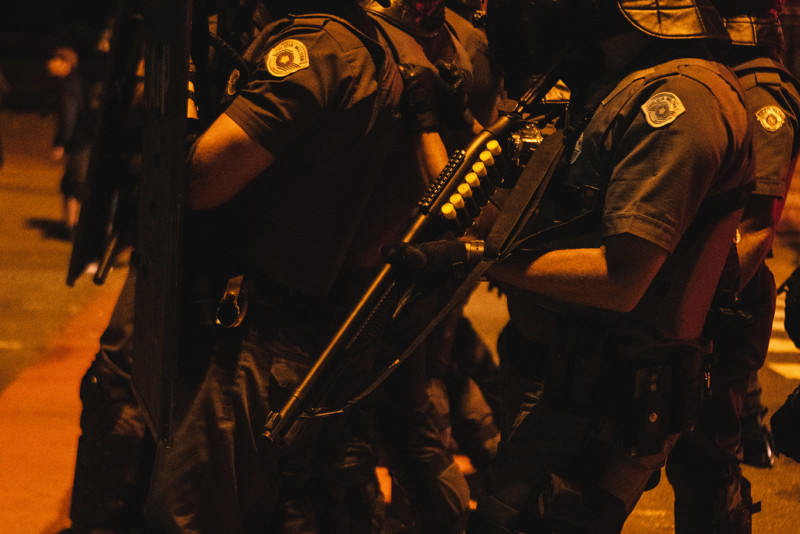
Dos and Don’ts
So now we come to my tips:
#1. Be ready and don’t be afraid to get closer to your subject.
#2. Front shots are always better than back shots (though, of course, some back shots can give you more information about who’s protesting).
#3. If police are there, they can improve your safety, but do not stay too close as some objects thrown at the police can hit you.
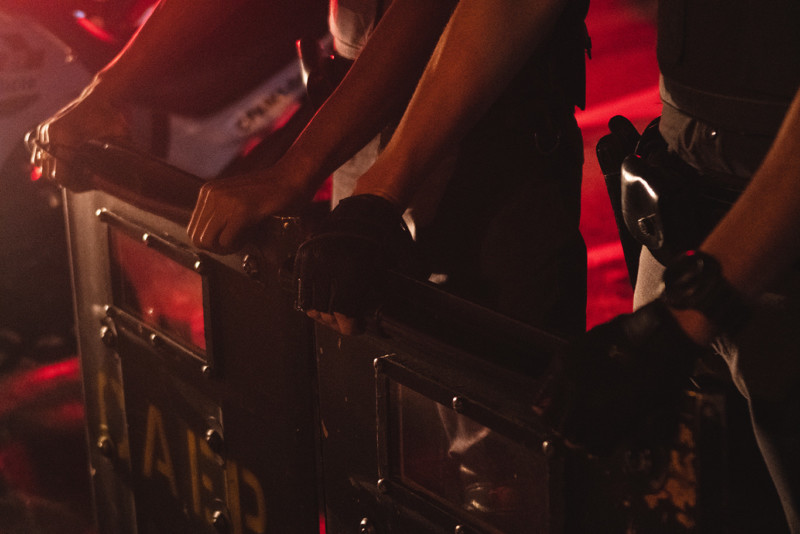
#4. If you feel safe at the protesters’ side, remember you be hit by things like stun grenades, debris, and rubber bullets.
#5. Your gear must be resilient and weather-sealed at least.
#6. Distance can be your enemy but also your ally. Just think about where you’re safest at any given moment.
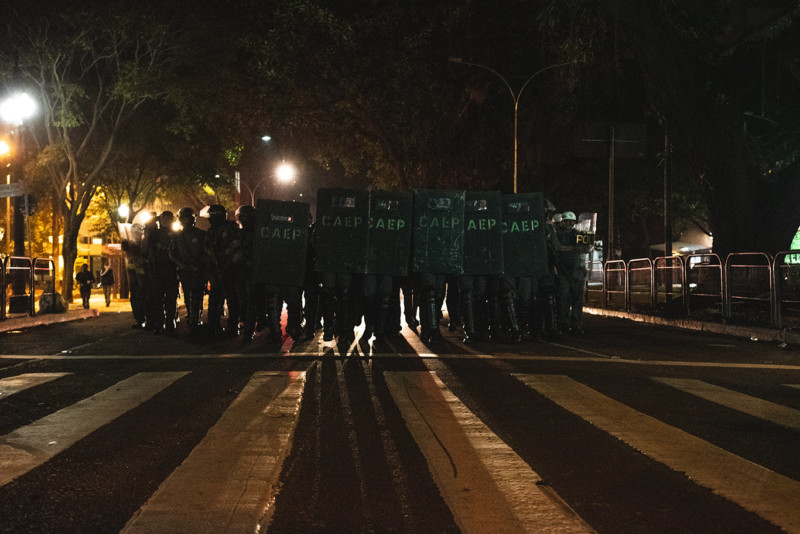
#7. When s**t happens, the only friends you’ll have are the other photographers. Stick with them, as they’re in the same boat.
#8. Using a zoom or fixed lens is your personal preference. Both will give you good results. What matters is your vision of the subject matter.
#9. Don’t be afraid.
#10. If you want to show the truth, don’t pick sides.
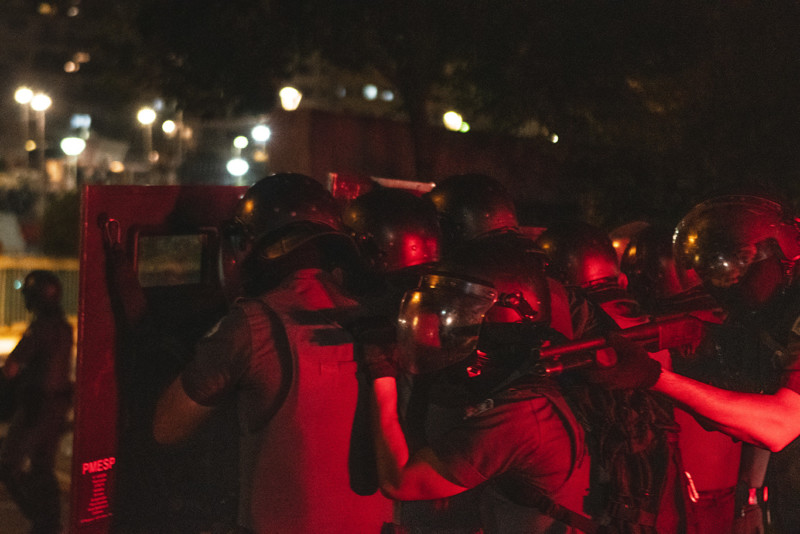
I’ve been on the streets covering this kind of thing since 2016 as a photographer. I used to be a rioter back in 2013.
Everything I’ve shared here is only my opinion and views. The correct advice may be different from photographer to photographer.
About the author: Ettore Chiereguini is a freelance photographer from Santos who’s now based in São Paulo, Brazil. The opinions expressed in this article are solely those of the author. Chiereguini has been photographing the Brazilian political scene since 2016. You can find more of his work on his Instagram.